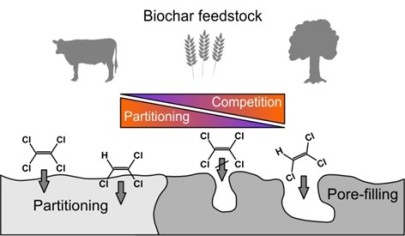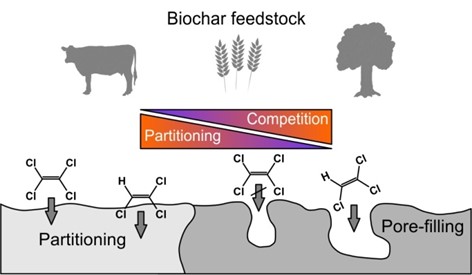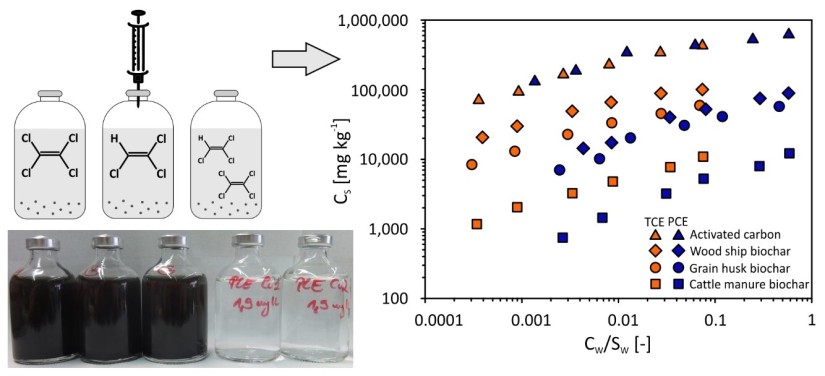Biochar is defined as a carbon-rich material obtained from pyrolysis of organic material such as plant residues or organic waste. It is often used in agriculture to enhance soil fertility, however also increasingly deemed a potential sorbent for contaminants in soil and water remediation. The purpose of my research is to determine the underlying foundations that will govern the use of biochar in remediation technologies. This will be achieved by verifying the characteristics of biochars that are important for sorption and desorption of organic contaminants commonly found in contaminated sites.
Three biochars were prepared from different feedstocks (cattle manure, grain husk, and wood ships) at a pyrolysis temperature of 450°C and extensively characterized. This included e.g. organic carbon content, ash content, specific surface area, total and micropore volume, and pore size distribution. The biochars were then tested for their sorption behaviour towards two commonly found organic contaminants, trichloroethylene (TCE) and tetrachloroethylene (PCE).
Equilibrium batch experiments revealed that the sorption behaviour is strongly dependent on biochar properties, that in turn are controlled by the feedstock material. Sorption to wood ships and grain husk biochar, high in carbon and microporosity, is controlled by pore-filling. Biochar produced from cattle manure, with high ash content and polarity, shows significant contribution of partitioning.
All biochars showed stronger sorption towards TCE compared to PCE. This is surprising, given TCE’s higher water solubility and lower log K OW value. The differences in sorption were attributed to steric effects, e.g. size exclusion in small micropores and specific interactions.
Batch experiments in mixed contaminant systems (TCE and PCE combined) revealed that both compounds compete for sorption sites, but the degree of competition is strongly influenced by the sorbent properties. Cattle manure biochar with low porosity and high polarity experienced smaller competitive effect and shows increased overall sorption. This is mainly attributed to its partitioning phase. Biochars prepared from wood chips and grain husk showed stronger competition that is additionally dependent on the investigated concentration range.
To assess the long-term sorption performance of the biochars, accelerated leaching experiments were conducted. All chars released significant amounts of labile organic carbon, but also soluble ions such as phosphate, potassium, sodium, and chloride. This resulted in a change of biochar bulk and surface properties. Additionally, the sorption behaviour of TCE and PCE towards the leached biochars was tested. The results revealed that sorption was slightly enhanced, compared to fresh samples. This is probably caused by an enrichment of the organic carbon matrix and the unclogging of previously blocked micropores.
The reversibility of TCE and PCE sorption will be tested with a customized sequential extraction procedure. Preloaded biochars will be extracted with a sequence of different solvents to determine the strength of their binding towards the sorbents. We expect to find unique extraction/release profiles depending on biochar and sorbate properties.
Country, Continent: Germany, Israel
Funding agency: German-Israeli Foundation for Scientific Research and Development
Years of activity: 2015 – …
Responsible person: Inga Schreiter, Christoph Schüth
Cooperation partners: Ellen R. Graber, Agricultural Research Organization, Volcani Center, Israel http://www.agri.gov.il/people/680.aspx




